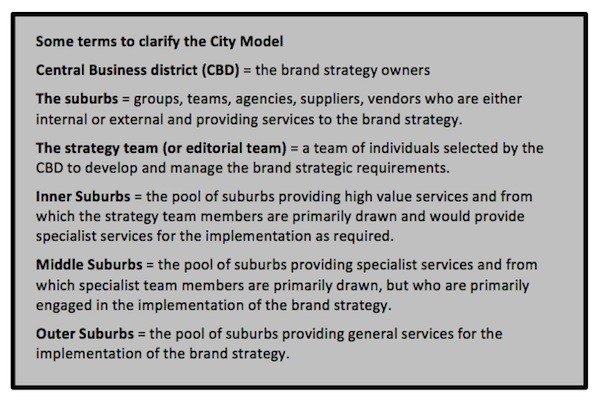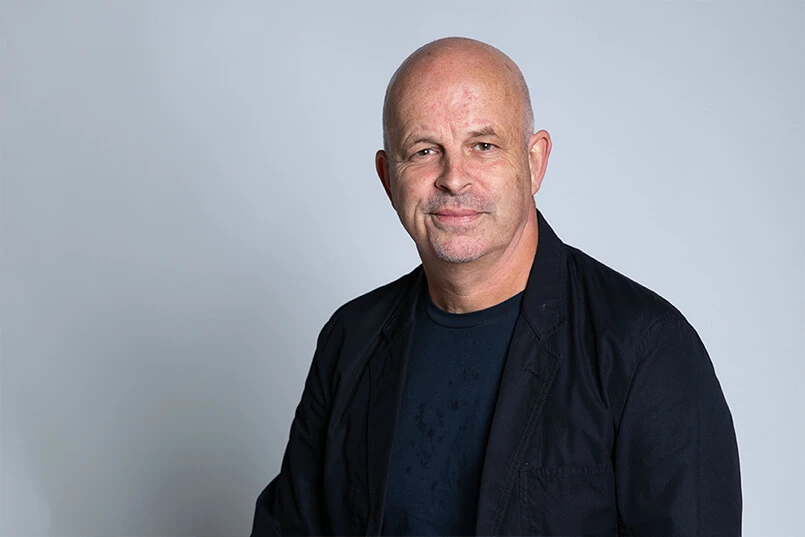When considering the arrangement of their agencies and marketing suppliers, the default model for this roster of suppliers is either consolidated within a network agency or holding company or a village of agencies with complementary skill sets required to work together collaboratively to deliver the organisation’s marketing requirements.
Both of these models are functional, and both have inherent strengths and weaknesses.
Beyond the compromised capabilities and additional costs for the consolidated model and the significant time and effort marketers must expend managing the Village model, there is another critical consideration.
In both models, the marketers largely delegate responsibility for management and function to the agencies rather than provide clear guidance as to priorities. The danger here is that in the consolidated model, the opportunity is for the focus to be on the more profitable functions offered, and in the Village model, the focus is determined by the more dominant agencies in the Village.
While these are not the only roster models for agencies and marketing suppliers, we believe there is a helpful approach to defining and communicating a marketer’s priorities for their agency roster. We have found it useful to think of the roster model not as a village but as a city—the city model.
What is a city?
A city usually has a central business district where the larger core financial businesses are located. Surrounding this CBD is a succession of suburbs, each with its own character and style. The suburbs often radiate out from the city centre, with the more expensive and desirable suburbs closer to the CBD than those further out.
In the same way, we can apply a framework to an agency roster model. In the model’s heart is the CBD, where the brand team and the valuable brand stakeholders reside. Closest to the brand team are the suburbs (agencies, resources, disciplines) of most value to developing and delivering value. Further out are the other suburbs of less direct value, but essential suburbs (specialist skilled agencies) and at the fringe are the least valuable suburbs (agencies, suppliers and vendors providing largely commoditised services)
Defining strategic and financial value
When I talk about value, I mean strategic and financial value. Using a Boston Matrix, the coordinates are labelled financial and strategic importance. Which suppliers offer strategically important services, financially important services, and both or neither?
Our Agency Roster Alignment categorises agencies into three segments: strategic, specialist, and simple/general. Strategic agencies provide both strategic and financially critical services, specialists have skills that are either strategic or financially important, and simple/general agencies have services that are neither strategically nor financially important but often commoditised.
Marketers have traditionally not invested in strategy development, as agencies usually offer free strategies subsidised by implementation fees.
When we analysed the spending mix across many of our clients, we found that of the total A&P budget, less than 1% was spent directly on developing strategic and creative ideas. The balance was consumed in implementation and administration.
This means that while agencies are a source of strategic and creative thinking, these resources are locked into and mainly provided to secure a share of the 99% unrelated to solving strategic problems or creating innovative ideas to deliver value.
Effectively, the first two segments are welded together and increasingly difficult to separate. This difficulty is twofold:
1. The agency is wedded to this strategy and fears providing the resources without guaranteeing a ‘more than their fair share’ of the rest of the budget. The thought usually expresses that only the creator can oversee the implementation to ensure it fulfils the promise. This is seen as anti-collaborative, so marketers spend excessive time managing these relationships.
2. Conversely, marketers are so used to getting strategy and creativity with their implementation that they have difficulty valuing or paying for this separately. And why should you pay for this when the agencies are ready to offer this at a discounted rate?
So, how can marketers access these resources?
Building the City Model
The first stage is to put the brand team at the centre of the process in the CBD, with all of the required infrastructure and support. This has not been easy in some organisations, as the brand’s responsibility has become increasingly dispersed across multiple stakeholders.
Also, some brands have outsourced the responsibility and ownership of the brand strategy to third parties due to a lack of resources and capabilities. The ownership and associated responsibility must be centralised in the CBD, not necessarily with the brand team.
Around this central axle are the suburbs: research, data analytics, strategy, media, retail activation, CRM, content creation, etc. These can be internal resources or external resources. The strategic value informs the suburbs’ placement of their role in developing and realising the brand value.

With the rise of in-housing of many of the services agencies and marketing vendors provide, it can be helpful to include in-house services in the City Model to align external vendors with the internal agency better.
But how does this structure operate?
Activating the City Model
The activation process is designed to deliver the right resources at the right time without linking strategic development to implementation. However, as the agencies have traditionally linked the two, a new approach is required to access and engage these resources.
The agencies are a good source of strategic and creative thinking. Creating solutions and providing innovative thinking motivate these people – the larger the task or challenge, the greater the engagement.
Rather than engaging the whole suburb, which is currently purpose-built to deliver this thinking and the implementation, you cherry-pick the right people within a range of suburbs based on the immediate requirements of the brand strategy. This could be the digital strategist from one agency, a research strategist and the channel planner from another, the creative director from another, and a technology innovation specialist from a third.
The size and composition of this team are based on matching skill sets to the task at hand. This can also change at any time to meet the specific changing needs of the brand strategy and requirements. What is not required are the resources within those suburbs that are focused on and dedicated to the implementation. Although some administration may be necessary to support this team, the selection and appointment of these resources must also be decoupled from the implementation.
The purpose of this team is to work with the brand team or brand owners to either:
- Solve specific strategic issues or problems
- Develop longer-term strategic solutions and ideas
- Manage the ongoing strategic requirements and direction
Beyond these functions, it also assists in selecting and apportioning the implementation tasks, budget apportioning, and assessing results.
This approach allows the brand team or owner to access the resources within the various suburbs and engage them as required to develop the strategy or solution collaboratively.
The decision to engage the team in the longer term depends on the brand strategy’s requirements.
The obstacles to change
The greatest obstacle to change is that the demand must come from marketers. The trouble is that most marketers may feel that the system is not optimal, but they are willing to ‘risk’ change for fear that the alternative is worse. In the meantime, the agencies are trimming around the edges with superficial innovation, in most cases, trying to create a point of differentiation.
The agencies’ fear of the City Model is that their experience with more collaborative roster models usually means they sacrifice a share of the budget as revenue. Offering their best strategic and creative resources across all disciplines puts them at risk of not recouping these resources’ costs and not securing their share of the much more significant revenue spent on the implementation.
This means that marketers need to be willing to pay for the resources in the strategic brand team—not just token payments but actual cost recovery and profit margin. The difference is that rather than simply getting the resources the agency provides, you will be able to select the best and brightest to suit the brand’s requirements.
This transforms the agency from an ad factory to a talent repository. Similarly, the big talent agents in Hollywood are resources for valuable talent – actors, directors, screenwriters, etc. Their livelihood is based on their ability to get the deal up front and even make money on the way through. Eventually, agencies may transform into talent repositories, or the talent agents of the entertainment industry may bring their skills into this category.
In the meantime, the same agencies will continue to position themselves as the best implementation solution. But now, the brand and strategy teams will collectively decide on the best solutions and the apportioning of the work. This creates a more representative and collaborative process, separating strategic development from the ideation and implementation stages.
What are the next steps?
Change requires a first step.
The first step is clearly defining the marketing requirements of the roster.
Then identify the agency or vendor in the roster that is best placed to provide, or if a shared responsibility, lead those services.
Then, those services, agencies, or vendors can be arranged into three levels using the Boston matrix against strategic and financial importance.
The three levels are:
- Inner Suburbs – Strategic Drivers
- Middle Suburbs – Specialists
- Outer Suburbs – Simple/General
What do you think? Could the City Model work for you?





2 thoughts on “The City Model for structuring and managing your agency roster”
So many recent discussions suggest this is where many clients need to be and want to be. Implementation of course presents challenges, but one of the great features of the model is that it recognizes and pays for innovative agency thinking, instead of just getting it for free along with a pre-determined output.
Darren: An appropriate metaphor to represent a transition from a linear to radial thinking which reinforces the fact that strategy and tactics are not sequential steps but need to occur simultaneously and in tandem. The real challenge is the change in mindset that is required. It can happen if the argument combines reason (effectiveness and efficiency) and emotion (a sense of pride in what you do).
Comments are closed.